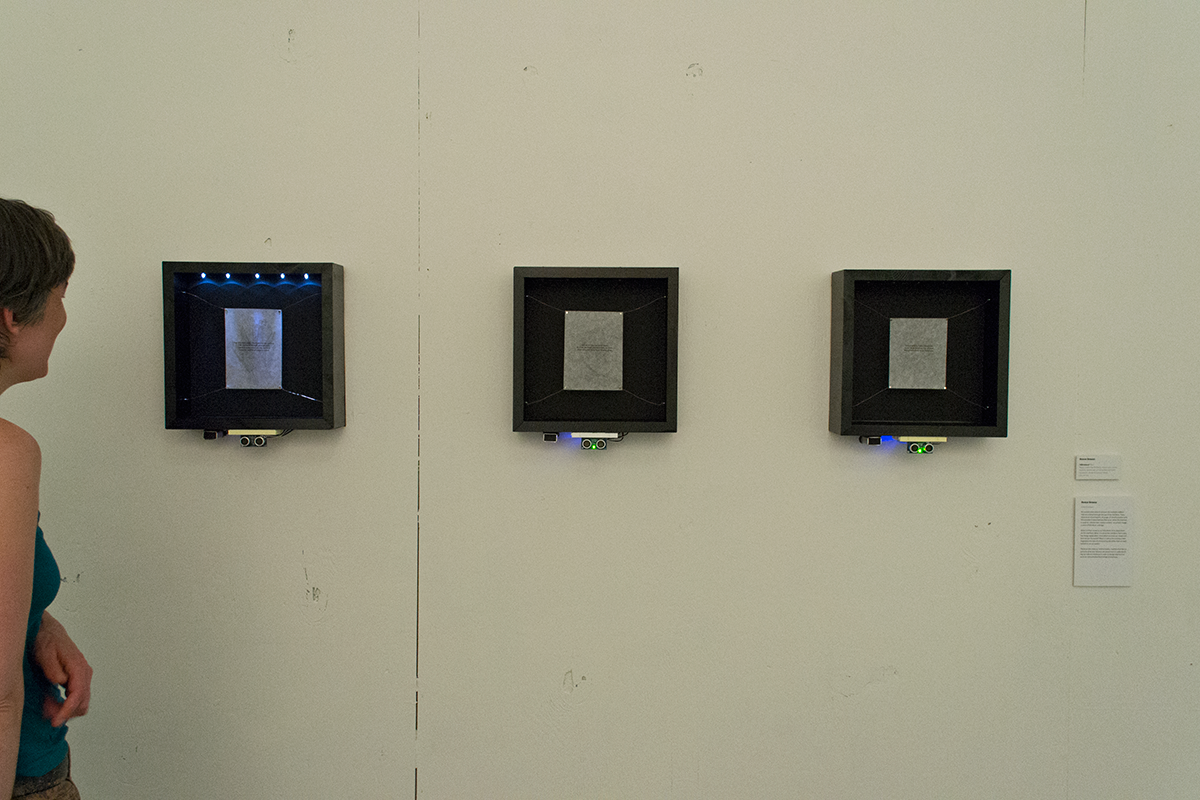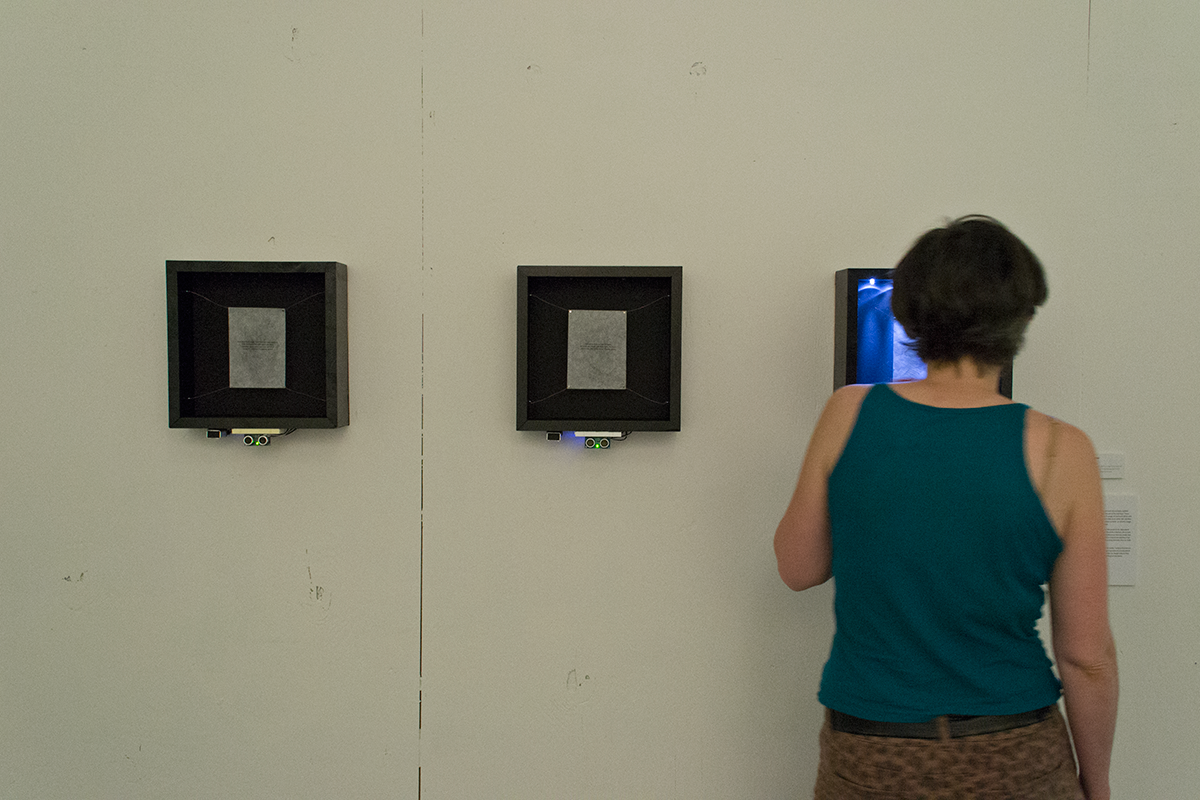Affordance
The term affordance was introduced in psychology as a name for environmental opportunities for behavior by Gibson(1979). The root of the idea is from Gestalt psychology, particularly the idea of valence or demand character—a felt pull to action—inherent in experience. Affordances, unlike valences or demand characters, are not mental; they are features of the environment that do not change given the needs of a perceiver. An apple, for example, still affords eating, even when a perceiver is not hungry. Nonetheless, an apple’s affordance for eating is still in some sense dependent on perceivers. The apple affords eating for most humans but does not afford eating for cats.
The viewer was invited to approach this piece in order to reveal the drawings of a loved one's features hidden behind extracts of Vladimir Nabokov's poem Pale Fire.
-
And then black night. That blackness was sublime.
I felt distributed through space and time:
One foot upon a mountaintop, one hand
Under the pebbles of a panting strand,
-
One ear in Italy, one eye in Spain,
In caves, my blood, and in the stars, my brain.
There were dull throbs in my Triassic;
-
green Optical spots in Upper Pleistocene,
An icy shiver down my Age of Stone,
And all tomorrows in my funnybone.



